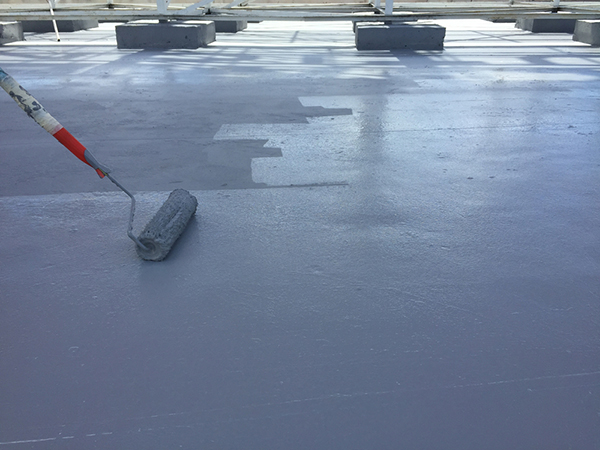What Is the Best Flat Roof Coating
Author: Dan Stout | December 12, 2023
Coating a flat roof can lengthen its life and dramatically reduce energy bills. But with a wide array of available products, how do you choose the best flat roof coating for your project?
First, you'll want to compare the longevity, UV exposure and water resistance needs against any roofing material and customer budget constraints. For example, a roof shaded by neighboring buildings or trees most likely won't need a coating that protects it from the sun's rays, but it may need a coating that can hold up to impact damage or standing water.

Here are three popular types of coatings to explore and some situations where they'd be a good fit.
Fibered and Non-Fibered Aluminum
Aluminum roof coatings use a binding agent (usually asphalt) and aluminum pigment. This creates a bright silver shield that reflects the sun's rays and reduces cooling costs while preserving the underlying roof. These coatings are a great option in extremely sunny, warm climates to help keep the interiors of the buildings cool.
Products such as TRI-BUILT's Non-Fibered Aluminum Roof Coating can be used on many kinds of roofing, from built-up asphalt to smooth-surfaced Modified Bitumen. This non-fibered aluminum coating is especially useful for preventing rust and corrosion of metal roofs. However, aluminum coatings aren't recommended for gravel, rubber, or PVC roofing. It's important to consider the local climate for aluminum roofing as well, since standing water dulls the aluminum, making it less reflective and potentially leading to adhesion failure. Because of this, avoid using aluminum coatings on roofs with ponding.
Fibered aluminum coatings use additives to increase their strength. The fibers also help to control viscosity, making them easier to apply to sloped surfaces. But fibered coatings normally have a slightly higher cost per gallon, and that higher viscosity means that you'll need more material to complete the job. For example, ROOF X TENDER 460 Non-Fibered Aluminum uses about a quarter-gallon less material per square than Fibered ROOF X TENDER 450. On larger jobs, that can have an big impact on costs. If your customer has a tight budget, you may want to consider a more affordable option that offers similar benefits.
Aluminum coatings can be applied by brush, roller or spray. They cleanup with mineral spirits and should be mixed using a power mixer, especially for fibered aluminum.
Acrylic Cool Roof Coating
Acrylic cool roof coatings provide a flexible top surface and excellent long-term reflectivity, making them a great choice when the customer's primary concern is energy savings. Elastomeric coatings such as ROOF X TENDER 500 have high elasticity, which is beneficial for buildings prone to expansion and contraction. Many acrylic coatings also contain mildewcides, which are useful on shady roofs. Installers also appreciate post-installation cleanup that only requires soap and water.
Acrylic coatings typically require two coats at 1.5 gallons per square. If coverage is a concern, you may want to consider upgrading to a premium product such as the ROOF X TENDER 700, which boasts three times the coverage.
Roofs with poor drainage may not be the best choice for acrylic, since standing water can cause the coating to delaminate. In that case, consider counteracting potential water damage by using an embedded poly reinforcement layer.
Silicone Coatings
Silicone-based coatings such as ROOF X TENDER 985 are the best choice for roofs with potential ponding. In fact, silicone is so effective that moisture will sit on the roof's surface. However, this causes the roof to be extremely slippery, and silicone coatings are not recommended for high-traffic roofs without an embedded texture.
Silicone is suitable for coating just about everything, including metal, concrete, BUR, Modified Bitumen, EPDM, TPO and most PVC Roofs. You can apply silicone with a brush, roller or spray as long as your equipment meets the spray specifications. Cleanup for silicone-based coatings require mineral spirits.
Ultimately, finding the best coating is about balancing factors such as local climate, roof traffic and customer budget. By staying up to date with the latest in roof coating options, you'll be able to meet all of your customer's needs and select the best flat roof coating for their specific circumstances.